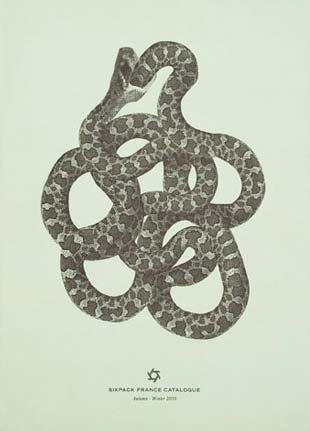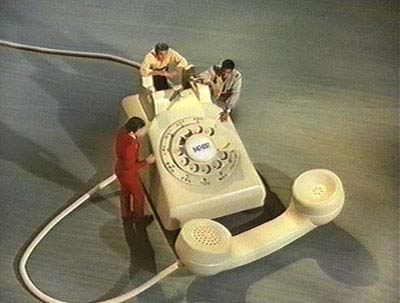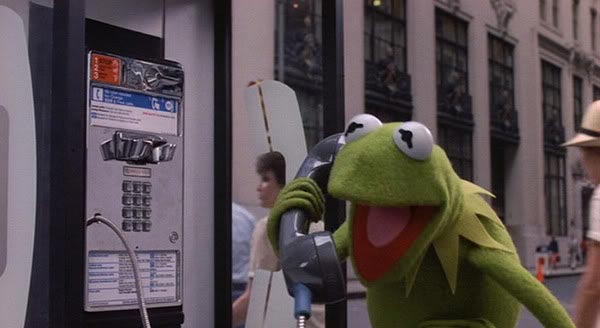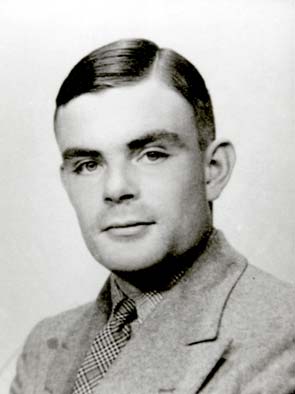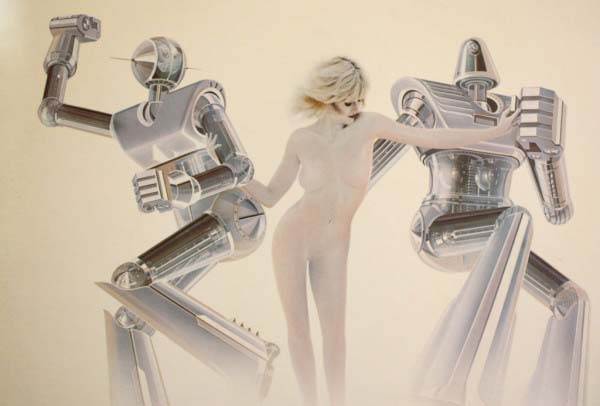technology
On an ever spinning wheel
Zachary Mason’s critically praised first novel comes with a largely self-explanatory title: “The Lost Books of the Odyssey” purports to be a compilation of 44 alternate versions of Homer’s epic. What that title cannot possibly convey, though, is the unusual journey of Mr. Mason’s manuscript on its way to publication by Farrar, Straus & Giroux last week.
Mr. Mason, 35, a computer scientist specializing in search recommendation systems and keywords, once worked at Amazon.com. He avoided writing workshops and M.F.A. programs as a matter of principle, and produced “The Lost Books” at night, during lunch breaks and on weekends and vacations. (…)
In person, Mr. Mason is extremely soft-spoken and tends to talk in a flat, unemotional tone, though he does note with regret that he “turned down Google two weeks before their I.P.O.” (He’s now employed at a Silicon Valley start-up.) He approaches literature almost as if it were a branch of science, governed by laws that are quantifiable and predictable, as when he talks of devising an algorithm, later discarded, to determine an optimum chapter order for his novel or when he compares writing to the annealing of metals.
As the clock ticks out like a dripping faucet
If I call you, will you call back? The study of reciprocity between mobile phone users reveals surprising insights about the flow of information in society.
What do your mobile phone habits say about you? Probably more than you might imagine.
At least, that’s the suggestion from Lauri Kovanen and pals at the Aalto University School of Science and Technology, Finland. These guys have studied the 350 million calls made by 5.3 million customers over an unnamed mobile phone network during a period of 18 weeks. The primary question they ask is whether mobile phone calls are mutually reciprocated: in other words, does somebody who calls another individual receive in return as many calls as he or she makes, a phenomenon known as reciprocity.
Mobile phone calls are a particularly good way to study reciprocity because they are directed in a way that sms messages and email are not. In a mobile phone call, the caller initiates the conversation and then both parties invest a certain amount of time in the event. But afterwards there is usually no immediate reason for the recipient to call back. So it’s clear who initiated the event.
But SMS messages or e-mails are entirely different: here a conversation usually means sending a sequence of reciprocated messages and this makes it much more difficult to study reciprocity by simply counting the number of messages.
So I’ll pull myself together
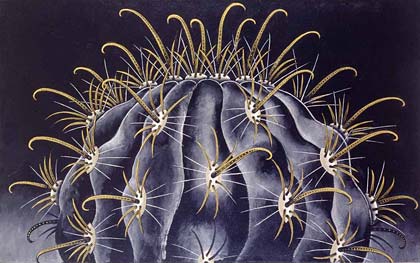
Who are the best spreaders of information in a social network? The answer may surprise you.
The study of social networks has thrown up more than a few surprises over the years. It’s easy to imagine that because the links that form between various individuals in a society are not governed by any overarching rules, they must have a random structure. So the discovery in the 1980s that social networks are very different came as something of a surprise. In a social network, most nodes are not linked to each other but can easily be reached by a small number of steps. This is the so-called small worlds network.
Today, there’s another surprise in store for network connoisseurs courtesy of Maksim Kitsak at Boston University and various buddies. One of the important observations from these networks is that certain individuals are much better connected than others. These so-called hubs ought to play a correspondingly greater role in the way information and viruses spread through society.
In fact, no small effort has gone into identifying these individuals and exploiting them to either spread information more effectively or prevent them from spreading disease.
The importance of hubs may have been overstated, say Kitsak and pals. “In contrast to common belief, the most influential spreaders in a social network do not correspond to the best connected people or to the most central people,” they say.
illustration { Martin Wong’s Ferocactus }
Let me tell you how I live… Like that?
YouMe: Control Real People In Real Time
An unusual new service called YouMe is being touted as the next generation of gaming, and a new way of sourcing help. The service will let users (”Yous”) control real people (”Mes”) in real time. Yous give instructions to the Mes via bluetooth headset or text message, and the Mes escapades are captured by video camera and streamed live. Almost anything is game as far as requests, barring illegal or sexual activity. YouMe is in private beta, and should launch later this year.
10Q (thank you)
baltimore craigslist
Personal Texting Assistant
Date: 2009-06-23, 11:39PM EDTLooking for an assistant to help in texting duties -
replies
deleting texts
alerting of new texts
reading texts
filtering textI get 40 - 50 texts an hour, I cant handle my workload plus texting responsibilities. My phone gets too full and needs deleted every couple hours. This is a full time position and you must be where ever I am at, because my phone is always with me. Serious inquiries only.
Past and present they don’t matter
The heyday for nanotech VC [Venture Capital] likely saw its peak in 2008, when overall investment reached $1.4 billion. Last year, the sector raised only $792 million, signifying a 42% decline from 2008. But while overall nano VC backing is down, it’s not out, according to a new report from Lux Research. Investment in nano-driven healthcare and life sciences increased last year at the same rate that overall nanotech VC dropped — 42%. These two segments attracted $404 million last year, and are likely to lead VC investments in nano for the near future.
December’s death or glory how you want it?

Copyright infringement has stirred the souls of artists and publishers since the time of Charles Dickens, who went to the United States in 1842 to ask the Americans to stop pirating his works.
His books were being reprinted there without his receiving a penny, but the Americans told him to jump in the lake.
How the world has changed. Now America’s a bastion for the defence of copyright and the country that once rejected international copyright laws is relentless in enforcing them.
However, 2009 might have marked the year when the enforcers lost valuable ground. (…)
Technology has forced the change, one in which there is no turning back.
related { confessions of a book pirate }
I has a hotdog but I eated it

{ For almost three years now, this has been Ben Huh [the 32-year-old founder of the humor-blog startup Cheezburger Network]’s life: to pore over millions of JPEGs and YouTube clips in search of Internet memes — those absurd running gags that hatch and proliferate on the Web seemingly overnight — and figure out which of these quick-hit laughs might yield long-term profits. | Wired | Full story }
When the music’s over, turn out the lights
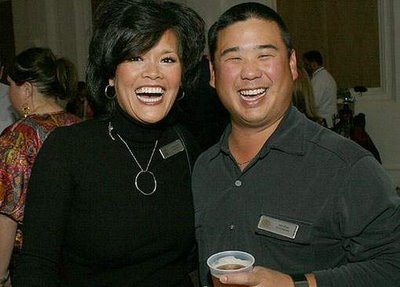
{ The 4 big myths of profile pictures: It’s better to smile, You shouldn’t take your picture with your phone or webcam, Guys should keep their shirts on, Make sure your face is showing. | OK Trends | Full story }
Hey, I’m tired of being a freaky musician, I wanna be Napoleon! Let’s have some more wars around here!
‘Pirate Philosophy’ explores how the development of various forms of so-called internet piracy is affecting ideas of the author, the book, the scholarly journal, peer review, intellectual property, copyright law, content creation and cultural production that were established pre-internet. To this end it contains a number of contributions that engage with the philosophy of internet piracy, as well as the emergence out of peer-to-peer file sharing networks of actual social movements - even a number of political ‘Pirate Parties’.
It used to be the dust that would lay here
What’s driving TVs to go wireless?
For many years now, there’s been a trend in the TV world toward thin, flat-screen displays. A few years ago, when a plasma television weighed 250 pounds and was 4 or 5 inches thick, it was really challenging to call that a truly “hang on the wall” TV. But now, modern ultra-slim TVs are less than an inch thick and weigh only 40 or 50 pounds. It’s at the point where it’s just like hanging a picture on the wall–put a few hooks up, hang it and you’re done. The problem is now you’ve got this beautiful TV hanging up above the fireplace and all these ugly wires dangling over the mantle! We need some way to get rid of those wires, and consumers are looking for something easier than tearing up the wall to route cables. Wireless is the perfect solution.
So ignore all the codes of the day, let your juvenile influences sway
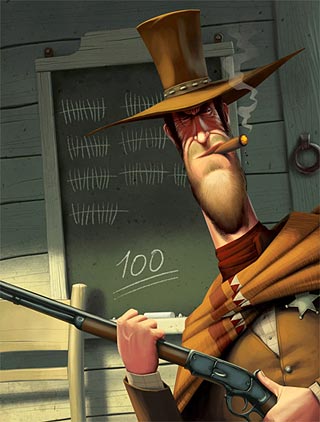
It’s five years today since the world’s most famous computer game, World of Warcraft, began. And I’m both proud and slightly embarrassed to say that I’ve been there since the beginning. (…)
I believe that World of Warcraft matters. Exactly how and why it matters, though, can be hard to get at from the outside; much of what reaches the mainstream media is a muddle of scandals, statistics and pseudo-scientific scraps. So I’d like to take a few moments to recall just what it was like to play this game for the first time five years ago, in the company of an old friend who had managed to wheedle both of our ways onto the game’s American servers in time for launch—and why, five years on, the character I created then is still soldiering on through the northern reaches of the world’s most famous unreal destination.
What struck us, first of all, was just how much it felt like a world: huge, organic, inviting exploration. There were lakes, mountains, rivers, forests, cliffs, towns, cities, and lots of things to squash, splatter, maim and generally exterminate for the sake of various rewards. What struck us shortly after this was that, although there was a game here to be played, there was also an awful lot more to it than simply playing and trying to win. My friend had chosen to play a dwarf warrior as his first character but, unlike any other game we’d encountered before, there was no sense in which he was that character. As far as World of Warcraft was concerned, he was himself, and just happened to be strolling around a vast cartoon world in the guise of an aggressive dwarf. And that was much more interesting, because it meant that—for the first time any of us had known—you could actually be yourself while playing. In fact, you could be all sorts of things that your self didn’t normally manage.
image { Denis Zilber }
How did he not find the baggy, with his hand in my shoe?
I believe there is a lot of fraud in high tech startups, 95 percent of which fail. With only a five percent chance of surviving, startups face a gauntlet of risks as described in this quote from uber-VC John Doerr in my show Nerds 2.01: A Brief History of the Internet:
“There are four categories of risk to look for in every project:
1) “People risk: How the team will work together. Because inevitably one of the founders does not work out and drops out.”
2) “Market risk: This is an incredibly expensive risk to remove. It is about whether the dogs will eat the dog food. Is there a market for this product? You do not want to be wrong about market risk.”
3) “Technical risk: This risk we are quite willing to take on. Whether or not we can make a pen computer that works, be the first to commercialize a web browser, or split the atom if you will. That technical risk is one we are comfortable trying to eliminate or take on.”
4) “Financial risk: If you have all of the preceding three risks right (people, market, and technical), can you then get the capital that you need to grow the business? Typically you can. There is plenty of capital to finance rapidly growing new technologies that are addressing large markets.”
Of course Doerr completely forgot to include fraud risk — that investors would simply have their money stolen.
Tech fraud happens all the time and those who are fooled include the most sophisticated investors (big shot VCs are not at all immune). (…)
Several years ago I lost what was for me a substantial amount of money investing in a financial patent startup. It looked great on paper, the only problem being that the paper was forged, simply made up. Nothing was as it seemed. The company’s books literally didn’t exist. So I sued, spending a lot more money, only to have the founders declare bankruptcy and walk away.
Or S.T.H. when they let me back at the Deuce

Since World War II, Russian scientists have been researching ways to bend the weather to their liking. Today, they routinely ensure sun-splashed Victory Day celebrations by chasing away clouds using a technology known as cloud seeding (the same technology the Chinese government used to chase away clouds during the Beijing summer Olympics).
It’s nice to have sunny parades, but Moscow officials believe they can use their technology to alter the weather and save some rubles, according to the Los Angeles Times:
Now they’re poised to battle the most inevitable and emblematic force of Russian winter: the snow.
Moscow’s government, led by powerful and long-reigning Mayor Yuri Luzhkov, has indicated that clearing the capital’s streets of snow is simply too expensive. Instead, officials are weighing a plan to seed the clouds with liquid nitrogen or dry ice to keep heavy snow from falling inside the city limits.
photo { Michael Kenna | more }
Once again, back is the incredible, the rhyme animal
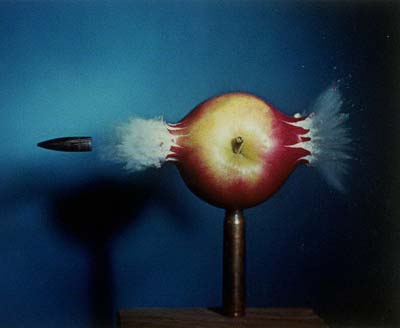
When Steve Jobs returned to Apple the company had just completed a fiscal year where they lost about $1 billion on $7 billion in revenue. The company was worth about $4 billion. Rivals like HP and Dell were worth about $62 billion and $8 billion, respectively.
Today Apple is worth a staggering $184 billion on revenues of $36.5 billion and net income of $8 billion. The company is now worth far more than HP and Dell combined. Hewlett Packard is worth just $119 billion, and Dell is worth $28 billion. You could throw another Dell in there and Apple would still be worth more.
And the world is like an apple whirling silently in space, like the circles that you find, in the windmills of your mind
Alan Turing (1912 – 1954) was an English mathematician, logician, cryptanalyst, and computer scientist, who also wrote papers over a whole spectrum of subjects, from philosophy and psychology through to physics, chemistry and biology. He was influential in the development of computer science and providing a formalisation of the concept of the algorithm and computation with the Turing machine (1934-1936).
In 1999, Time Magazine named Turing as one of the 100 Most Important People of the 20th Century for his role in the creation of the modern computer, and stated: “The fact remains that everyone who taps at a keyboard, opening a spreadsheet or a word-processing program, is working on an incarnation of a Turing machine.”
During the Second World War, Turing was recruited to serve in the Government Code and Cypher School, located in a Victorian mansion called Bletchley Park. The task of all those so assembled — mathematicians, chess champions, Egyptologists, whoever might have something to contribute about the possible permutations of formal systems — was to break the Enigma codes used by the Nazis in communications between headquarters and troops.
Because of secrecy restrictions, Turing’s role in this enterprise was not acknowledged until long after his death. And like the invention of the computer, the work done by the Bletchley Park crew was very much a team effort. But it is now known that Turing played a crucial role in designing a primitive, computer-like machine that could decipher at high speed Nazi codes to U-boats in the North Atlantic.
In 1948, Turing, working with his former undergraduate colleague, D. G. Champernowne, began writing a chess program for a computer that did not yet exist. In 1952, lacking a computer powerful enough to execute the program, Turing played a game in which he simulated the computer, taking about half an hour per move. The game was recorded.
In 1950, his Turing test was a significant and characteristically provocative contribution to the debate regarding artificial intelligence.
After 1952, Turing became interested in chemistry and worked on mathematical biology. He wrote a paper on the chemical basis of morphogenesis, and predicted oscillating chemical reactions, which were first observed in the 1960s.
Turing’s homosexuality resulted in a criminal prosecution in 1952.
In January 1952 Turing picked up 19-year-old Arnold Murray outside a cinema in Manchester. After Murray helped an accomplice to break into his house, Turing reported the crime to the police. During the investigation, Turing acknowledged a sexual relationship with Murray. Homosexual acts were illegal in the United Kingdom at that time, and so both were charged with gross indecency under Section 11 of the Criminal Law Amendment Act 1885, the same crime that Oscar Wilde had been convicted of more than fifty years earlier.
Turing was given a choice between imprisonment or probation conditional on his agreement to undergo hormonal treatment designed to reduce libido. He accepted chemical castration via female hormone injections, one of the side effects of which was that he grew breasts.
On 8 June 1954, Turing’s cleaner found him dead; he had died the previous day. A post-mortem examination established that the cause of death was cyanide poisoning. When his body was discovered an apple lay half-eaten beside his bed, and although the apple was not tested for cyanide, it is speculated that this was the means by which a fatal dose was delivered. An inquest determined that he had committed suicide.
On 10 September 2009, following an Internet campaign, British Prime Minister Gordon Brown made an official public apology on behalf of the British government for the way in which Turing was treated after the war.
We need to talk about your TPS reports
For some time now, futurists have been talking about a concept called the Singularity, a technological jump so big that society will be transformed. If they’re right, the Industrial Revolution—or even the development of agriculture or harnessing of fire—might seem like minor historical hiccups by comparison. The possibility is now seeming realistic enough that scientists and engineers are grappling with the implications—for good and ill.
When I spoke to technology pioneer and futurist Ray Kurzweil (who popularized the idea in his book The Singularity Is Near), he put it this way: “Within a quarter-century, nonbiological intelligence will match the range and subtlety of human intelligence. It will then soar past it.”
Even before we reach that point, Kurzweil and his peers foresee breathtaking advances. Scientists in Israel have developed tiny robots to crawl through blood vessels attacking cancers, and labs in the United States are working on similar technology. These robots will grow smaller and more capable. One day, intelligent nanorobots may be integrated into our bodies to clear arteries and rebuild failing organs, communicating with each other and the outside world via a “cloud” network. Tiny bots might attach themselves to neurons in the brain and add their processing power—and that of other computers in the cloud—to ours, giving us mental resources that would dwarf anything available now. By stimulating the optic, auditory or tactile nerves, such nanobots might be able to simulate vision, hearing or touch, providing “augmented reality” overlays identifying street names, helping with face recognition or telling us how to repair things we’ve never seen before.
Scientists in Japan are already producing rudimentary nanobot “brains.” Could it take decades for these technologies to come to fruition? Yes—but only decades, not centuries.
related { Interview with Ray Kurzweil about the Documentary Transcendent Man, on the Future of Technology }
Steve Austin’s bionic eye has a 20:1 zoom lens and infrared capabilities to see in the dark, and can also detect heat

{ In 2007, Google sent out an army of hybrid electric automobiles, each one bearing nine cameras on a single pole. Armed with a GPS and three laser range scanners, this fleet of cars began an endless quest to photograph every highway and byway in the free world. | The Nine Eyes of Google Street View by Jon Rafman | Art Fag City | Continue reading }
related:

I want to go down in celluloid history Mr Shankly
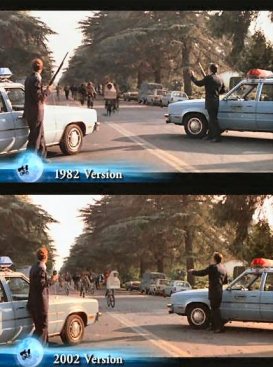
{ Having become a father, Spielberg was more sensitive about the scene where gun-wielding federal agents threaten Elliott and his escaping friends; he digitally replaced the guns with walkie-talkies. | E.T. 20th anniversary version }


